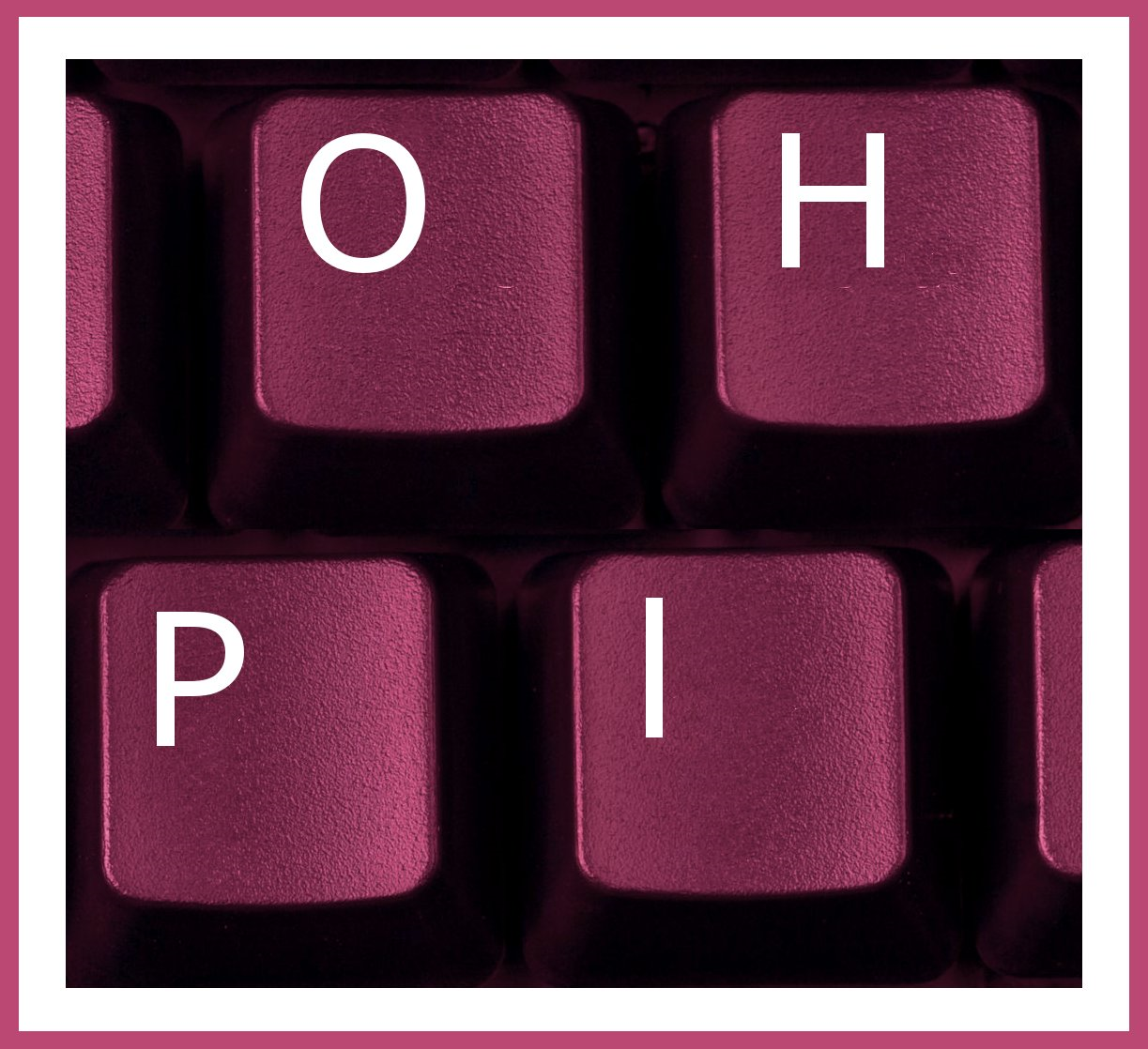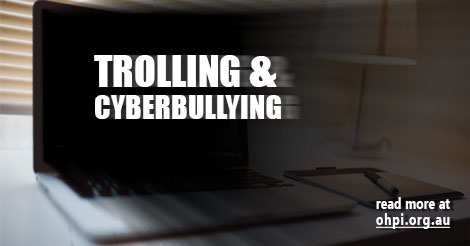The Online Hate Prevention Institute has been fielding a number of media questions about online trolling and abuse in recent days. We’ve discussed the issue on radio this week with 3AW’s Tom Elliott and K-Rock’s Hunter McLeod. There are number of types of online trolling we deal with at the Online Hate Prevention Institute and this briefing discusses them and the challenge of preventing the harm that results from them.
The category we call “serious trolling” is the most extreme and involves repeated abuse to cause mental harm. This could be done by one individual who repeatedly abuses a victim, often relentlessly, and in many cases with an explicit suggestion that their victim should commit suicide. In other cases there are organised “raids” where many different people each target the same person. We call this death by a thousand cuts, and once it starts it is very difficult to stop as each item of abuse is coming from a new person and blocking them is ineffective as that person’s damage has already been inflicted. In a raid each person may feel they aren’t doing anything that serious, but the cumulative effect can lead result in someone taking their own life.
Another form of “serious trolling” is RIP Trolling. This occurs when someone has died, usually in tragic circumstances such as a child who died in an accident or a fire fighter who gave their life protecting others, and the troll reads it in the news and then sets up a Facebook page or other social media content mocking the death. This causes extreme distress to family and friends as well as to the public at large.
Less serious, but still harmful, are the drive by trolling incidents. An individual posting an abuse comment, and moving on. These comments can also be extreme, such as that directed against Essendon footballer Courtenay Dempsey over the last weekend. The comment was racist against his Aboriginal Heritage, homophobic, and told him to kill himself. Comments like this are designed to shock. The intended audience may be a person’s online friends and the action may be nothing more than an expression of daring with no though paid to the actual victim at all.

An analogy for the trolls is that of a two year old who is given a dummy, takes it out their mouth, and throws it on the ground. Some helpful person returns it to them. They throw it on the ground again, smiling. It’s returned to them, they throw it on the ground laughing. Asking why the child dislikes the dummy would be missing the point. It’s not about the dummy at all. The child is seeking attention and their behaviour is getting them what they want. Those around them feel compelled to respond.
One of the motivations for trolling is then empowerment. Those doing it suddenly have power over others and are pushing their buttons to get them to respond and give them attention. In some sense it’s a fleeting moment of fame and power, often done under a pseudonym or anonymously, so they can take the cheap thrills and walk away avoiding any consequences.
Another motivation is schadenfreude which literally means “harm-joy” in German. This is a concept of taking joy or laughing at someone else’s expense. The idea can be traced back to Aristotle who used the word epikhairekakia to describe someone who takes joy from another’s misfortune. In the modern context we see it in slapstick comedy, the pie in the face of the clown, or the misfortune of cartoon characters who are forever being run over by steamrollers, falling off cliffs or being killed by explosions. Some trolls get a thrill out of the harm they are causing to really people. These people often blame the victim for taking it seriously or for not being “tough enough” to withstand the abuse.
Responding to incidents of trolling
The traditional advice is to ignore trolls. This advice is a little dated and comes from a time when the lasting impact of trolls was negligible. Today the impact of trolling can have an ongoing negative effect if the content becomes embedded in cyberspace and associated with someone’s name. It’s also possible for trolling to go viral with devastating consequences. Our general advice is not to respond publically, but to report trolling to the platform. Try to get the content removed without engaging directly with the troll or trolls.
Where the trolling is a crime, for example, stalking, use of the internet to make threats, serious racial vilification (or religious vilification in Victoria), or the promotion of violence or suicide, also report it to police.
Keeping a record of the abuse is important as well, but can be distressing. When possible, we recommend getting a friend to help monitor and record the abuse, for example by taking screenshots. This reduced the impact on the person who is being targeted while still capturing the information which demonstrates there is a serious problem.
In addition to reporting the content to the relevant social media company (see our guides on how to do this), you can also report cases of online abuse in social media to FightAgainstHate.com. The FightAgainstHate.com tool is operated by the Online Hate Prevention Institute and tracks how social media companies respond to reports of abuse. We also follow up on some of the cases through online campaigning (where this is possible without identifying the victim), and may raise particular cases in our direct discussions with the social media companies.
Reducing Serious Trolling
The routine activity approach to crime opportunity explains that crime requires three elements, a motivated offender, a suitable opportunity or targets, and the absence of a capable guardian who is likely and able to create consequences. The ability to use a false identity or act anonymously online, combined with a poor record of response to online abuse even when the abuser is acting under their real name, contributes significantly to the problem. Serious consequences are often unlikely with most abuse handled not by police but by platform providers. The most serious consequence in this context is that an account will be closed, and this is nothing more than a minor setback as accounts are free and can be easily replaced. Many trolls pre-emptively create throw-away account.
What can be done about trolling? The key lies in better cooperation between platform providers and government. The platform providers will usually be the first people to be notified of abuse, and they are the only people who can provide the information needed to trace the poster of online content back to a real location. Government, usually through police, may be the only ones able to apply meaningful consequences to the abuse.
An improved relationship between platforms and police needs to start with faster responses from the platforms when police request information from them in relation to incidents. A far stronger step would be if platforms like Facebook, YouTube and Twitter set in place a policy of proactively notifying police of serious abusers. The mere possibility of this occurring would act as a strong deterrent, meaning less abuse would be posted online.
Any time social media companies hand over data to a third party, including Government, privacy needs to be considered. As privacy was never intended to shield criminal activity if a platform has evidence of such activity there is no reason they can’t, as good citizens, notify police. Of course it does require an understanding of local law and relationships between people in the companies and in government. This works best when social media companies establish a local presence in a country and really engage with the local community. Hopefully such engagement will become more common in more places in the future.
Take action
Please help us share the advice in this briefing:
View other briefings on serious trolling and cyber-bullying. To support the work of the Online Hate Prevention Institute you can also like us on Facebook, follow us on Twitter, or donate to support our work.

